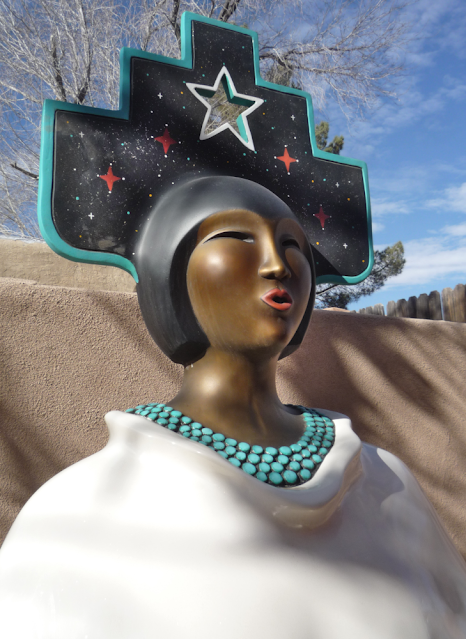River of Shadows: Eadweard Muybridge and the Technological Wild West by Rebecca Solnit.
I'd only read Solnit's political commentary until I picked up this book at my favorite used book shop in Albuquerque. In River of Shadows she provides a lot of detail about Muybridge and his extraordinary innovations in photography, but she also gives historical context to his life at the end of the 19th Century. I only had given the photographer passing attention because of his high speed photos of animal locomotion. As Solnit documents, however, before he invented a whole new genre of the art Muybridge was a practitioner of landscape photography in the heroic tradition of wet plates and giant cameras. She also details the photographer's abrupt personality change following a head injury which led to his becoming a murderer, and perhaps contributed to his inventiveness.Solnit's writing style is dense with ideas and requires more attention than I was sometimes able to summon with my bedtime reading habit. She also left some things unexplained about the technical aspects of Muybridge's innovations in high-speed photography. Solnit and others allege that Muybridge achieved shutter speeds in excess of 1/1000 seconds. That seems feasible and true in regard to the mechanical accomplishment and the published results, but there must also have been some chemical innovations in creating adequate plate sensitivity and processing to allow actual recording of the images. It would be interesting to see the actual negatives which apparently needed some considerable amount of embellishment to produce the positives.
There is also no mention in Solnit's account of supplemental lighting to make the high-speed images. Edison invented the electric bulb in 1880 and the two inventors knew each other, so there is that. More important, perhaps, is the fact that Muybridge played a fundamental role in the invention of moving pictures which Edison capitalized on.
Timebends: A Life by Arthur Miller.
Miller's memoir was in the 99-cent sidewalk bin, also at Mecca Music & Books. I'm not sure what inspired me to pick it up other than the price and the 500-page heft. I also can't discount the novelty of his marriages to two celebrities, Marilyn Monroe and Magnum photographer, Inge Morath. So, I took home the book and -- 100 pages into it -- I am now quite taken with Miller's apparent total recall and the color it gives to my own vague recollections of what my grandparents told me of their time.Life was radically different in many ways during the first part of the Twentieth, particularly in regard to the concept of time and how it was spent mostly in meeting basic daily needs, much as was the case for centuries before. Then, industrialization gained transformative inertia, propelling us into an era of ease and terror. In spite of the contrasts between the beginning and the end of the Century, Miller's account of the politics of his time are oddly echoed in ours. Both eras saw the rise of authoritarian, fascist ideologies, a fact which is simultaneously troubling and comforting in that it provides a vision of turning tides.
So, the narratives of Miller and Solnit provide some insights into the great transitions which humanity has experienced over the last century. His style makes for easier reading and I may have more to say about the life he recounts by the time I get to the ending.
----------------------------------
UPDATE
Margaret also read the book. Like me, she found the middle of the book tiring because of Miller's obsession with critical reviews of his plays. Further on, Miller regains his feet and provides an absorbing narrative including his sympathetic portrayal of Marilyn and her predictable end. A happy ending was provided by his final twenty year marriage to photographer, Inge Morath.






